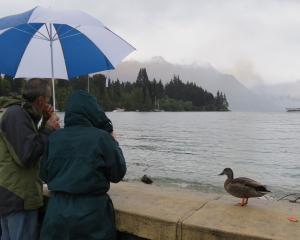''Coronet Peak Station, for example, has intact sites from the 1860s all the way to the 1930s,'' Dr Schmidt said.
''This is because access to the area is so limited. There are likely to be sites that have yet to be recorded, sites I certainly haven't seen or been to. Nowadays, that is pretty rare.''
Dr Schmidt also points to ''fantastic'' gold-mining sites between Deep Creek and Eight-Mile Creek, and along the Shotover and Arrow Rivers.
''They date to the 1860s. There are intact reservoirs that have water races feeding into them and the gold-mining activity below.
"There are hut sites and rock faces that people have just walked away from.
''There are also some high-altitude mining sites that are pretty unusual. It's a good mixture of European and Chinese gold-mining.''
There is also ample evidence of pre-European activity, he says.
''Motatapu Station has plenty of signs of Ngai Tahu activity. Elsewhere, there will be cooking and brief occupation sites.
''Maori were all through this area. Wanaka and Hawea were the main settlements, but they traversed backward and forward through these areas.''












